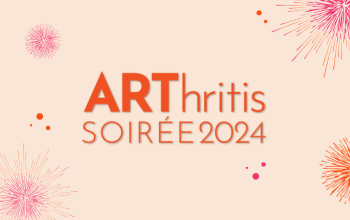What is Arthritis Research?
When people hear the term “research,” they picture scientists in white lab coats examining specimens under microscopes. Their goal? To find a cure, develop a medication, create a vaccine. While a great deal of research strives to meet these objectives, that is not the type of research scientists at Arthritis Research Canada do.
Arthritis isn’t one disease. It’s over 100 diseases that impact people of all ages and there is no cure. People have to live with arthritis – sometimes for their whole lives. Our research addresses the challenges those people face in living with a chronic disease to ultimately improve their quality of life. What does that look like in action? A couple of our scientists weigh in below to give you an idea.

Problem: Crippling Fatigue
Dr. Catherine Backman is a Senior Scientist of Rehabilitation at Arthritis Research Canada. She emphasizes a hurdle faced by people living with autoimmune arthritis: fatigue.
Arthritis fatigue is not the same as being really tired. The rest of us, when we get really tired, we get a decent night’s sleep and feel better. The relentlessness of arthritis fatigue is different. A woman involved in one of my studies once said, “It’s the kind of fatigue where I push the emergency stop in the elevator and lay down on the floor and cry.”
What would it take for you to push the emergency stop button in an elevator and lie down?
Another woman in the same study said she was once in a department store and the fatigue was so overwhelming that she crawled into the racks of clothes, hid herself and cried. We are not talking about people being tired and having some aches and pains. We are talking about a debilitating and unpredictable symptom.
Research Solution: Making It Work™
Imagine going to work and experiencing that kind of debilitating fatigue described by Dr. Backman. It can have a significant impact on a person’s ability to function efficiently and meet deadlines, which are expectations held by all employers. Arthritis does stop people from working. In fact, it is the biggest cause of work disability in Canada.
To help people living with rheumatoid arthritis stay gainfully employed after diagnosis, Arthritis Research Canada’s Scientific Director, Dr. Diane Lacaille, created the Making It WorkTM program. It consists of three main components: five web-based e-learning modules, five bi-weekly online video group sessions, and online consultations with employment-related professionals. One of the five modules focuses on fatigue and is designed to help people recognize how fatigue impacts their lives, identify some of the sources and learn to reduce it.
Problem: In Can Last a Lifetime
Dr. Jackie Whittaker is a research scientist of musculoskeletal rehabilitation. She explains how some forms of arthritis can start early and impact a person for life.
Various forms of arthritis are common in our society. For many of these conditions, there is no cure. So people live with arthritis for a long time and can experience years of disability and reduced productivity. Some forms of arthritis can be managed very well, but we are still learning how to best manage others. Although we don’t typically think of rheumatic diseases leading to death, they can contribute to people becoming very unhealthy and reduce life expectancy.
The various forms of arthritis also contribute to years of suffering or people not feeling like they’re reaching their potential. There is a huge burden related to the pain, lack of ability to be the person that you want to be, and learning how to struggle through relationships in life. Arthritis also has a massive societal burden in the sense that the different types cost our health care systems, our workforces, and society overall because some forms start at a young age and last for a very long time. There aren’t a lot of other categories of diseases that are as prevalent as arthritis that come with those steep costs.
Solution: Prevent it in the First Place
While you can’t prevent autoimmune forms of arthritis, you can prevent certain types of arthritis, like osteoarthritis, that are caused by joint injuries. In Canada, about 500,000 youth hurt their knees every year while playing sports. Half of them go on to develop knee osteoarthritis at a young age. Following a knee injury, people may have weaker knee muscles, become less physically active, and gain weight. The injury, in combination with these other factors, greatly increases the risk of developing osteoarthritis.
Dr. Whittaker, along with a team of patients and healthcare providers, has developed a new online exercise-based program to help boost recovery from a knee injury and reduce risk for osteoarthritis. The SOAR or – Stop OsteoARitis program aims to improve a person’s ability to self-manage their osteoarthritis risk through education, personalized exercise, activity tracking, and weekly action planning. This research is a key step forward in changing how we treat these injuries in Canada.
People with arthritis face many challenges that impact their daily lives and threaten their overall quality of life. Our scientists might not work in labs with microscopes, but they do work in the lab of life. Think of a challenge that arthritis might pose for women wanting children, a professional athlete, a mechanic who works with their hands every day, or a university student who needs to study but is overwhelmed with fatigue.
We’ve only given you a couple examples of challenges and how research addresses them. But Arthritis Research Canada is currently conducting over 100 studies to help people living with different types of arthritis.





















































